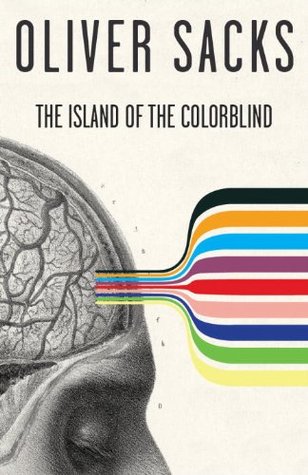More on this book
Kindle Notes & Highlights
a hereditary total colorblindness on Pingelap and Pohnpei;
memory, as Edelman reminds us, is never a simple recording or reproduction, but an active process of recategorization—of reconstruction, of imagination, determined by our own values and perspectives—
vascula
vicarious
hankering
swoop,
cycad,
bu...
This highlight has been truncated due to consecutive passage length restrictions.
unencumbered,
Eric Korn. It is to Eric, my oldest and dearest friend and companion in all sorts of scientific enthusiasms over the years, that I dedicate this book.
marooned
the real and the imaginary fused in my mind.
Wallace’s Malay Archipelago,
my favorite, Humboldt’s Personal Narrative
the sense of the romantic, the mythical, the mysterious, became subordinated to the passion of scientific curiosity.
lorises
And I was strangely pleased by a phrase in one of Darwin’s diaries, written after he had seen a kangaroo in Australia and found this so extraordinary and alien that he wondered if it did not represent a second creation.
tantalized
what it would be like to live in a completely colorless world, not just for a few minutes, but permanently.
a painter who had suddenly become totally colorblind following a car accident (and perhaps a stroke). He had lost color vision not through any damage to his eyes,
Indeed, he seemed to have lost the ability not only to see color, but to imagine or remember it, even to dream of it.
“leaden”
assuage
H. G. Wells’ short stories,
shrivelled
another book, by Nora Ellen Groce, about deafness on the island of Martha’s Vineyard. A sea captain and his brother from Kent, it seems, had settled there in the 1690s; both had normal hearing, but both brought with them a recessive gene for deafness. In time, with the isolation of the Vineyard, and the intermarriage of its close community, this gene was carried by the majority of their descendants; by the mid-nineteenth century, in some of the up-island villages, a quarter or more of the inhabitants were born totally deaf.
Martha’s Vineyard was an island where everyone spoke sign language,
“Classical congenital achromatopsia, with nystagmus, and avoidance of bright light—and the incidence on Pingelap is extraordinarily high, almost ten percent of the population.”
another island mentioned in a book on achromatopsia—the little island of Fuur, in a Jutland fjord—where there were a large number of congenital achromatopes.
this book, called Night Vision—
there are no known achromats left on the island of Fuur. All of the cases in the original studies are either dead … or have long since migrated.
Colorblindness had existed on both Fuur and Pingelap for a century or more, and though both islands had been the subject of extensive genetic studies,
A Residence of Eleven Years in New Holland and the Caroline Islands, being the Adventures of James F. O’Connell. The book was published, I saw, in Boston in 1836;
reconditely
proas
congenital achromatopes, have no cones (at least no functional cones):
fill the fovea—
and are specialized for the perception of fine detail,...
This highlight has been truncated due to consecutive passage length restrictions.
rods, which, in achromatopes as in the rest of us, are distributed around the periphery of the retina, and though these cannot discriminate color, they are much more sensitive to light. It is the rods which we all use for low-lig...
This highlight has been truncated due to consecutive passage length restrictions.
without the mediating influence of cones, his rods quickly blanch out in bright light, becoming almost nonfunctional; thus Knut is dazzled by daylight, and literally blinded in bright sunlight—his visual fields contract immediately, shrinking to...
This highlight has been truncated due to consecutive passage length restrictions.
His visual acuity, without a cone-filled fovea, is only about...
This highlight has been truncated due to consecutive passage length restrictions.
He must also, consciously or unconsciously, discover ways of deriving information from other aspects of the visual world, other visual cues which, in the absence of color, may take on a heightened importance.
his intense sensitivity and attention to form and texture, to outlines and boundaries, to perspective, depth, and movements, even subtle ones.
do not experience my world as ‘colorless’ or in any sense incomplete.” Knut, who has never seen color, does not miss it in the least; from the start, he has experienced only the positivity of vision, and has built up a world of beauty and order and meaning on the basis of what he has.5
“Laudable nystagmus,
the trackless vastness of the Pacific. No ships, no planes, no land, no boundaries, nothing—only the limitless blue of sky and ocean,
Johnston atoll was “restricted” and that non-military passengers were not allowed to disembark.
ornithopter—
empyrean


